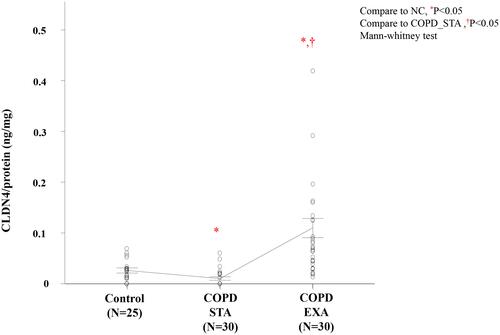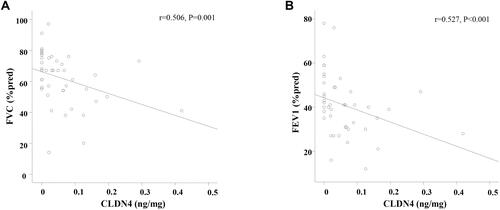Figures & data
Table 1 Clinical Characteristics of the Healthy Control Subjects and the COPD Patients
Figure 1 The plasma claudin-4 (CLDN4) levels of the subjects. The plasma CLDN4 levels of healthy control subjects were compared to those of patients with stable (ST) or exacerbated (EXA) chronic obstructive pulmonary disease (COPD). *P<0.05, control vs COPD-ST; †P<0.05, COPD-ST vs COPD-EXA.

Figure 2 Association of plasma claudin-4 (CLDN4) levels and lung function of chronic obstructive pulmonary disease (COPD) patients. (A) Forced vital capacity (FVC), and (B) forced expiratory volume in one second (FEV1) of COPD-stable (ST) was correlated with plasma CLDN5 levels.

